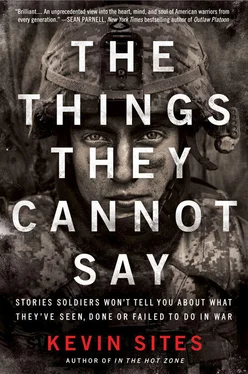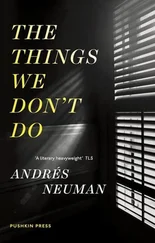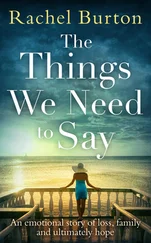“I can hear the ting, ting, ting of AK rounds hitting us,” says Schoonhoven, “but I need to get out of the turret and onto the outside of the vehicle to reload.”
He waited for the Taliban guns to go silent for a moment, then counted to himself, three, two, one, just to be sure they were reloading. He sprang from the hatch, fresh ammo belts in hand; opened the top of the .50 cal; threaded the rounds through the receiver; closed the weapon; and scurried back into his hole, all within ten seconds. Schoonhoven’s Patria positioned itself to cover the infantry it had dropped off and now hurried them back into the protection of the vehicle, which pulled to a safer position. The Dutch regrouped and began firing mortars of their own around a house where a large group of twenty to twenty-five Taliban had taken cover. An air strike was called. Forward air controllers painted the house with their lasers and within minutes a JDAM (joint direct attack munition) missile obliterated it.
“Everyone starts yelling, ‘Fuck yeah,’” says Schoonhoven. After running into a well-planned ambush, the Dutch soldiers shook off the surprise, defaulted to their training and forced the Taliban out of the village. After holding their positions for a while, the Dutch soldiers moved into the village to look for bodies. While they didn’t find any, they did find something else that was disturbing. Schoonhoven says that the Taliban had a prisoner they had captured earlier and, judging by the marks on his body, tortured. His hands and feet were chained together, Schoonhoven says. He was in bad shape but still alive.
Back at the base, Schoonhoven thought, I survived another one. He felt almost untouchable now, but even more detached from himself. He’d get no sleep at all that night.
“At that point I’m not really sure how I feel,” Schoonhoven tells me, taking a cigarette from my pack on the table, lighting it and inhaling deeply. “I didn’t really think about it until we were sitting around the base talking about the battle and another soldier confessed that he had fired at a Taliban that looked smaller than the others. It made me think about the one I had shot.”
“What was it that bothered you about it?” I ask, pressing him.
“Was it a boy?” he blurts out suddenly. “Did I kill a boy, not a man?”
He looks away. But because there was no body to find he’ll never really know the truth. The not-knowing, he says, is almost worse for him.
“All of us soldiers know what it’s like to kill,” he says, “but it’s easier to talk to people that have been there.” He draws a little circle in the air with his free hand, indicating this place, Bonaire, a crystal-blue bubble in the south Caribbean, which, with a few exceptions besides Schoonhoven and myself, lies untouched by the war in Afghanistan.
“Most people don’t know what happened over there. I like that not everyone knows. I’m here for my rest. I’m trying to forget it.”
“Do you think you’ll be able to?”
“No,” he answers immediately, “but perhaps I can squeeze it into a smaller space in here,” he says, pointing to his head, “and put it away.”
He admits that even here on this island that was supposed to give him refuge, he hasn’t been so successful. Sometimes he drinks too much, despite stomach problems that indicate he shouldn’t drink at all. He tells me about one night when a woman kept pushing him to give her his seat at the bar. She became annoying to the point where he lost all patience.
“At that moment I was in Afghanistan in my head. That’s why I couldn’t take it and I snapped.”
He began flinging over plastic tables until the staff and other male patrons got him under control, finally ejecting him from the bar.
Part of what bothers him, he says, is the same complaint that I’ve heard from so many other troops returning from combat, that civilians might have curiosity, but deep down they don’t really care or don’t really want to know. His eyes begin to glisten as he remembers that night.
“I think it’s not on me to say something. To me it’s not worth all the energy to remember and tell the stories over and over. It gets irritating.” He pauses, takes a drag of his cigarette; he releases its blue smoke as if it’s a furtive memory, escaping without being told.
“But people should know something,” he says suddenly, with conviction. “Dutch people also fight… they kill and they get killed… and they get wounded.”
While in the army, a fellow soldier and scuba instructor taught Schoonhoven how to dive. He became so enamored with the sport that he moved up in certifications until he was made a dive master, able to help train and lead other scuba divers. He loved diving because it was a place where he didn’t have to talk, where he could leave his wars behind.
“You’re flying through a different world,” he says, “one that not everyone sees. I feel very peaceful there. It’s a peaceful place.”
He stops and laughs, thinking of something else. “But not on night dives; that’s when everything comes out to hunt. There’s a lot of killing going on then.” He smiles, thinking of the barracuda and other predators that gather around the rusting hull of the Hilma Hooker , Bonaire’s largest and shallowest wreck dive and a favorite of night divers.
At Karpata, we follow the chain deeper. At 120 feet, I stage my nitrox cylinder on a nest of rocks to pick up on my ascent. At 150 feet my dive computer is already beginning to beep, warning me that I’ve gone beyond the established, if somewhat arbitrary, 130-foot limit of recreational diving. Schoonhoven and I glance at each other and both of us make a pronounced “okay” with our thumbs and forefingers to signal we’re good to continue, no problems. At 200 feet the sloping angle of the reef becomes vertical and this world of water becomes almost silent except for the iron-lung-like sounds of my inhalation and exhalation through my regulator. For a sense of security, I hold the mouthpiece of a second regulator, my backup, attached to a second air cylinder clipped to my chest on the D-rings of my buoyancy compensator device, or BCD. The BCD is a harness with a U-shaped bladder that I can fill with air or deflate to achieve neutral buoyancy, a kind of equilibrium where I neither rise nor fall but suspend myself in the water. I’m not so worried about my regulator failing, but I know that a rupture in the tiny plastic part called an O-ring, which costs only pennies but helps maintain the life-giving seal between the regulator and the airflow from the cylinder, could be fatal. I wonder, however, as my limbs become heavier with every foot we descend, whether I will even be able to find my mouth with the backup if I need to. I’m already starting to feel some of the strange gauziness of nitrogen narcosis, a drunk-like state many divers begin to experience at depth. I look over at Schoonhoven; I can see in his eyes, he’s calm, relaxed, but I can tell he’s not sure he sees the same thing in mine. Still, we give each other the “okay” sign another time as we continue down the wall.
Now my world has become the narrow tunnel that I can see from my mask. My breathing and my beeping computer (warning me I’ve gone beyond, way beyond, my recreational diving depth) seem to me like a vitals cart next to a hospital bed, signaling the patient is still alive. We descend through several thermoclines, layers of increasingly colder water, before we reach the bottom of the wall. We stand for a moment, looking out at the darkness that separates us like a black curtain, but we go deeper still. I look at my computer. It reads 296 feet. I look at Schoonhoven as he peers into the darkness. Is this the place where one need never think of war again? Or is it farther still? I move forward, seeking only four more feet, a benchmark number, but an arm waves me back. It does, at that moment, seem like the small membrane of difference between living and being lost in the blackness below. But the blackness, while devastatingly lonely, still beckons. I wonder if the pressure would envelop me like a snug blanket if I tipped past the edge into its seductive void. Is this the place where the world above and the past can’t find us? My considerations seem infinite but last, in reality, only a few moments. I look at Schoonhoven. There is no time for uncertainty or lingering. This is a “bounce” dive, the risky practice of touching a depth beyond the normal recreational limits but not spending enough time there to require extensive decompression. You “bounce” off the bottom and go up. Spending even a few minutes on the bottom can mean running out of breathing gas in the shallows as we decompress. Doing so could mean we both get bent, wracked by nitrogen bubbles expanding inside our tissues and organs. We also risk pulmonary and cerebral embolism, larger bubbles that can block our blood vessels to our lungs and brain, killing us. We need to go. Schoonhoven jerks his thumb upward—the sign to ascend. Slowly, we begin swimming toward the surface, controlling our ascent, making sure not to outrace our air bubbles. While it was easy floating down, the wall seems steeper now. I press the auto-inflator button on my BCD to add a little air into the bladder, giving me a tiny lift, but am careful to not fill it too much, knowing the air will expand as the pressure decreases during our swim up. If it expands too much the BCD can take me on a rocket ride called a runaway ascent, which, again, has a good probability of ending ugly, especially considering the depth from which we just bounced. I pick up my nitrox cylinder and at ninety feet, we stop at the mouth of a cave and make the gas switch from regular air to the higher-oxygen-content nitrox, the logic being more oxygen in our bodies’ cells pushes out harmful residual nitrogen, helping us to “off-gas” faster. At thirty feet we begin a full half hour of decompression, swimming in circles and exploring the now-shallow bottom of the shoreline, to help us while away the time before we can surface and talk excitedly about what we’ve just done and survived. It was a brief return to the type of adrenaline rush that Schoonhoven and I both experienced during combat, but this time there were no bombs or bullets. Yet, it was just as dangerous, perhaps more so at times, than some of what we experienced in war. When we reach the top, we’re elated, psyched about our accomplishment, high-fiving each other. The celebration will be short. Later, a young colleague who came with us to act as a safety diver tells the assistant manager of the dive shop we both work for what we did with our day off. While we have a right to kill ourselves with our cowboy shenanigans if we need to, we’re told, we don’t have a right to do it using the shop’s gear and risking the shop’s reputation.
Читать дальше












